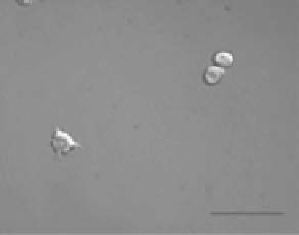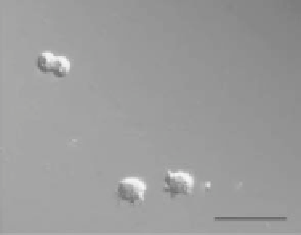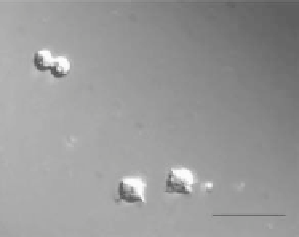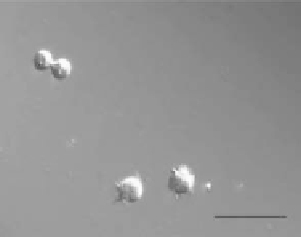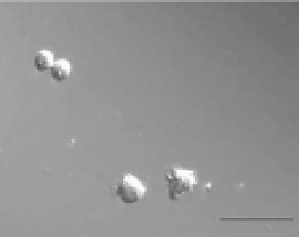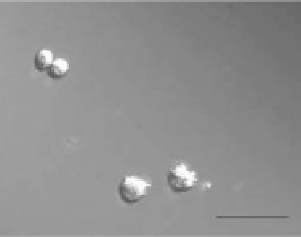Biomedical Engineering Reference
In-Depth Information
Q
Y
X
(a)
(b)
(c)
(d)
(e)
(f)
FIGURE 11.55
Morphologies of optical micrographs of electrosprayed Jurkat cells. Scale bar—20 µm.
(Reprinted from Jayasinghe, S.N., Qureshi, A.N., and Eagles, P.A.M.,
Small
, 2, 216, 2006. © John Wiley &
Sons Inc. With permission.)
particles basically consisted of a stainless steel needle connected to a high-voltage power supply and
a ring ground electrode. The needle was connected to a programmable syringe pump to allow the
fl ow rate to be varied between 10
−6
and 10
−17
m
3
/s. The spraying distance between the needle and
the ring was kept at
11 mm. In this work, an aspirin solution was aerosolized to generate droplets
at a fl ow rate of 10
−10
m
3
/s under an electric fi led of 0.36 kV/mm. The fl ow rate was minimized
to obtain the fi nest droplets. However, if the fl ow rate is too low, a stable cone-jet electrospraying
cannot be formed. A stable cone-jet mode can be achieved in the range of 3.5-4.2 kV, as shown in
Figure 11.56. A saturated solution of aspirin in ethanol was capable of forming aspirin droplets in
the size range of 0.3-20 μm from a needle with an orifi ce of
∼
200 μm. The droplets viewed imme-
diately after deposition were remarkably uniform in size, and the electrosprayed particulate crystals
were in the size range of 5-10 μm. The morphology of the crystals was considerably more regular
when compared with those formed without using an electrospraying technique. Figure 11.57 shows
the aspirin crystals generated using electrospraying. The experiment demonstrated that the electro-
spraying could aerosolize drugs to release an effective inhalation stream of fi ne drug droplets.
∼
